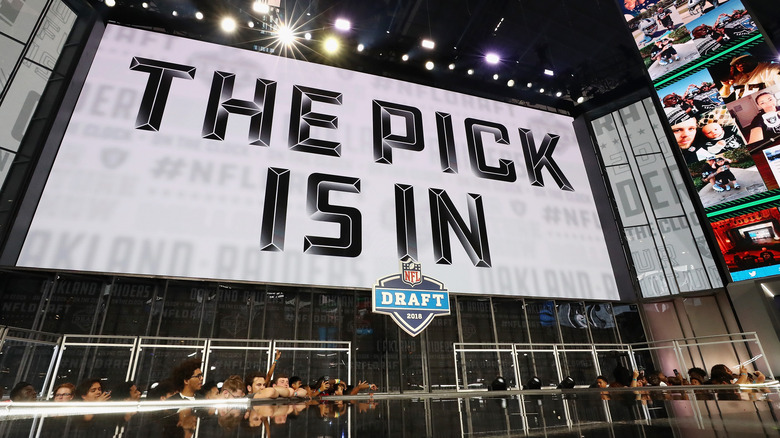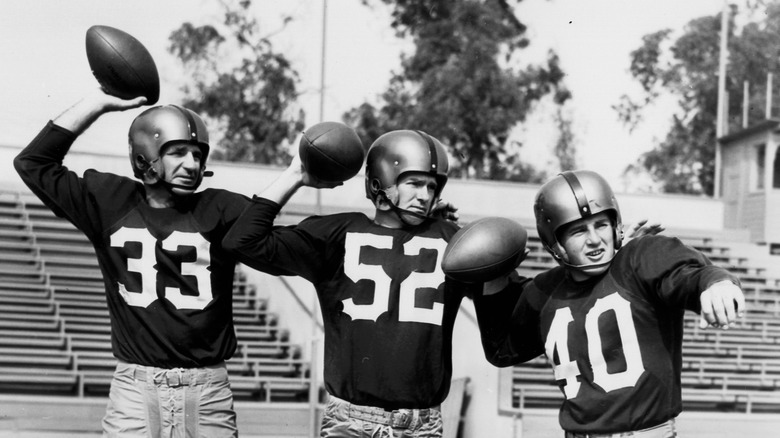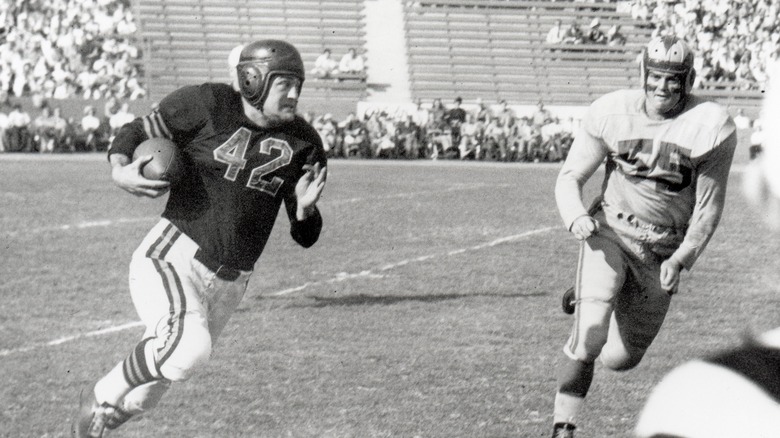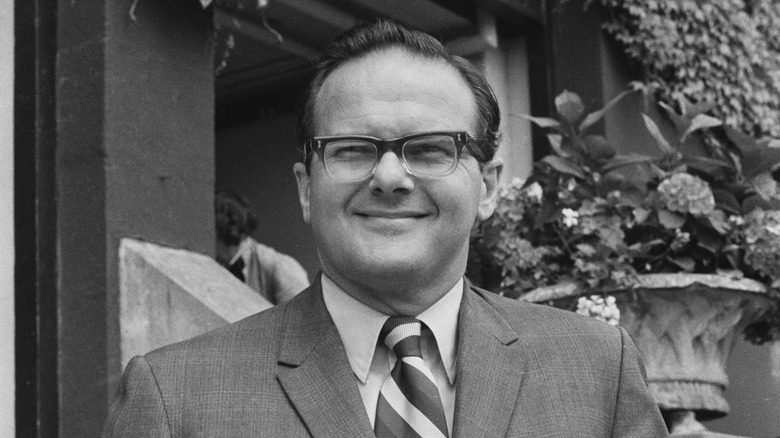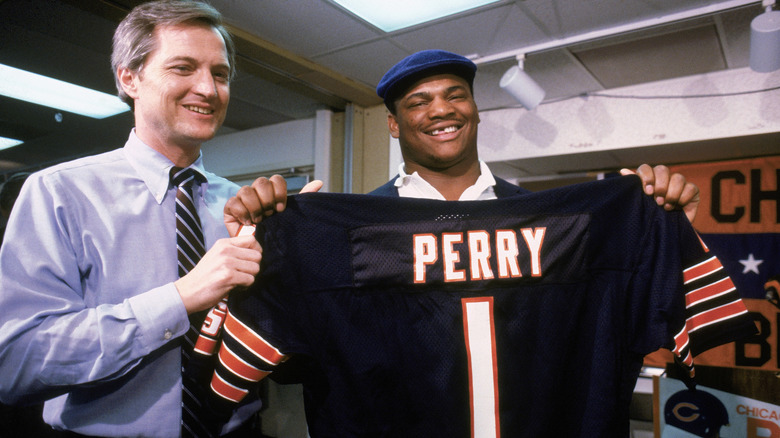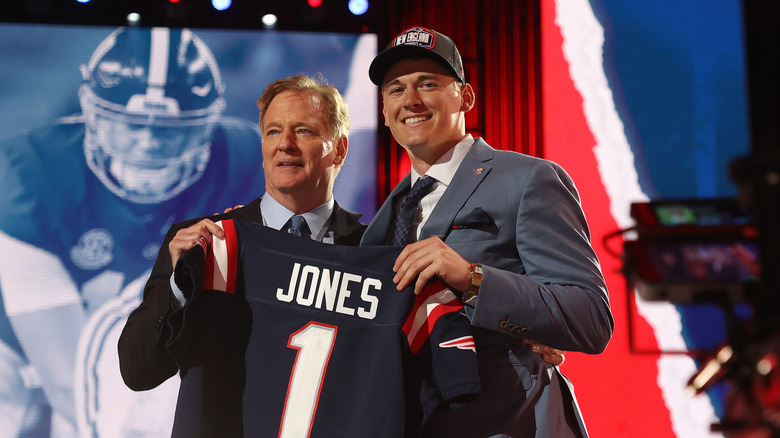How Is The NFL Draft Order Determined?
The dream for all NFL fans is to see their team hoisting the Lombardi Trophy following a Super Bowl victory sometime in early February. Only one team and fanbase get to experience this, while the other 31 go home empty-handed.
For the league's biggest bottom-feeders, there's a silver lining. A consolation prize for having to sit through 17 games worth of lack-luster play and calling personnel at every level of the organization — from the general manager to the head coach to the backup quarterback to the guy who puts on the helmet decals — "bums." That parting gift for having been a laughing stock all year comes in the form of the first overall pick in the NFL Draft, something that gives even the most bumbling franchises a sliver of hope for the following season.
According to NFL Operations, there's a set-in-stone methodology for assigning the draft order with tie-breaking procedures should the need arise, but that doesn't mean that there aren't situations that can throw wrenches into the works.
The NFL Draft started back in the 1930s
Before the NFL debuted in 1936, teams had free reign to sign whoever they wanted, whenever they wanted. The problem with this is that better teams had an advantage (via Pro Football Hall of Fame). It makes sense. If you're a highly-rated prospect leaving college and your pick of where to play, there's a good chance you'd want to go to the powerhouse championship contender.
The draft gave weaker teams the chance to bring better players into the fold in hopes of righting the ship instead of constantly losing out on top talent to more desirable teams with bigger wallets. The original draft format was the idea of Philadelphia Eagles general manager Bert Bell, and it was first put into use in 1936. The selection was based on the previous season's standings, but in reverse order, so the last place team picked first while the reigning champions picked last. The first draft consisted of nine rounds, which were bumped up to 10 in 1937.
The birth of the bonus pick
The NFL has gotten creative with the draft on occasion, even in the early days. In 1939, the draft was expanded to a snooze-inducing 20 rounds (thankfully for all in attendance, there were only 10 teams in the league back then, not 32 like today). In an unusual change, only the five worst teams earned picks in the second and fourth rounds (via the Pro Football Hall of Fame).
The league decided to change it up again and introduced the bonus pick. The bonus pick was the first overall, and it meant that in the first round, one team would get two picks. The team that was given the pick was done through a lottery system. The first bonus pick was given out for the 1947 NFL Draft, and it went to the Chicago Bears. This meant that the Bears bookended the first round with the first and 11th picks. The league did away with the bonus pick in the late 1950s.
The AFL complicated matters
The NFL ran into an unusual situation when it found itself with another up-start professional football league, the American Football League. Lamar Hunt was the son of an oil tycoon and a big enough football fan that he wanted to start his own team that would play in Texas. He approached the NFL, and the league essentially told him to leave and go back to Texas, which he did, just without a football team (via Remember the AFL).
Hunt decided to form his own league, the American Football League, in 1959. By turning Hunt down, the NFL had inadvertently spawned a rival league that was vying for the same players. For the first few years of their co-existence, the two leagues held separate drafts, and things got crazy. According to Bleacher Report, each league kept the date and location of its draft a secret and went out of its way to prevent prized prospects from entering the other league. By 1967, both sides reached an agreement to hold a joint or common draft, giving each league and its clubs a fair shake. The draft order was determined by combining both leagues' teams into a single ranking based on their records the previous season. The two merged completely a few years later.
The draft through the '70s, '80s, and '90s
Following the NFL-AFL merger, the league contracted the draft down to 12 rounds. According to the Pro Football Hall of Fame, the 1970s were a time of heavy draft pick trading, with the first overall pick even changing hands on four separate occasions.
By the time the '80s rolled around, the existential threat posed by the AFL was in the rearview, but another league popped up and tried to dip its toe into the talent pool. This time around, it was the United States Football League, or USFL. Per Bleacher Report, the league's inaugural season featured 12 teams, and while they managed to draw a respectable number of fans to fork over money for tickets, it just never caught on. After three seasons, the league folded following an ill-advised switch from playing in the spring — the NFL's offseason — to the fall, where they competed directly with the established league (via USA Today).
In the 1990s, the draft asserted itself as the way the decade's most successful teams were constructed. One of the prime examples of this was seen with the Dallas Cowboys, who stockpiled picks and managed to turn things around, going from one of the worst teams in the league in the late '80s to a Super Bowl-winning dynasty.
The draft order today
The current methodology for assigning the NFL Draft order uses the inverse results of the previous season, as has been the case since practically the start, but with new measures taking into account changes to the playoff format.
According to NFL Operations, the 20 teams that fail to make the post-season are ordered based on their records. The team with the worst record gets the first pick, and so on. Of course, with only a 17-game schedule, ties are likely, and the league thought of this. The tie-breaking procedure involves a term familiar to college football fans: strength of schedule. This is determined by combining the winning percentages of a team's opponents. A lower aggregated winning percentage means that team had an easier schedule and is therefore assigned the higher pick.
For teams that made the post-season, they receive their position on their draft based on a combination of when they were eliminated from the playoffs and what their regular season record was. For instance, the four teams eliminated in the wild card round are ordered according to the records, occupying the 21st through 24th picks. The same goes for teams knocked out in the divisional round who are given the 25th through 28th picks. Conference championship losers get picks No. 29 and 30, while the Super Bowl runner-up gets the 31st pick and the Super Champion the 32nd.
